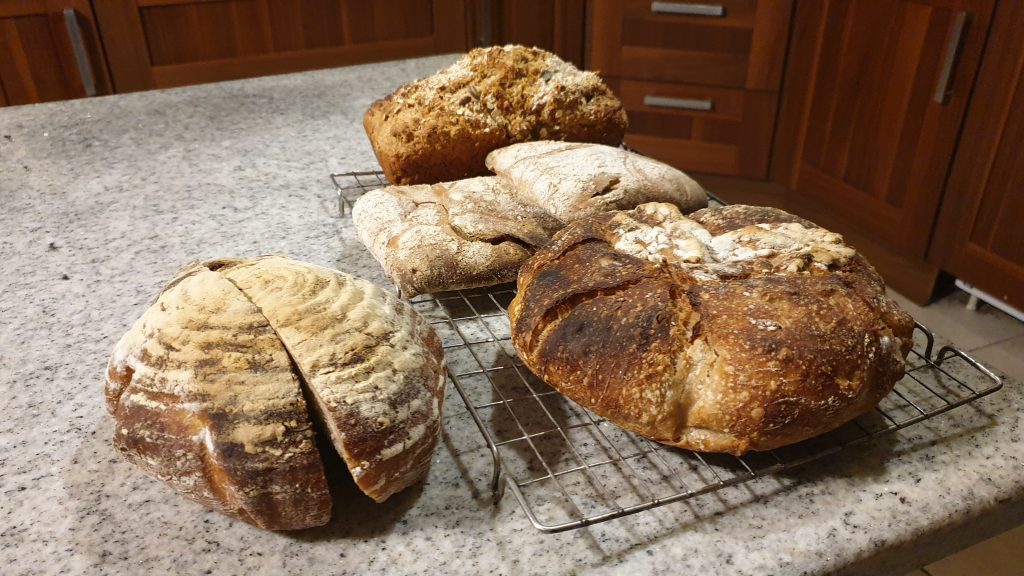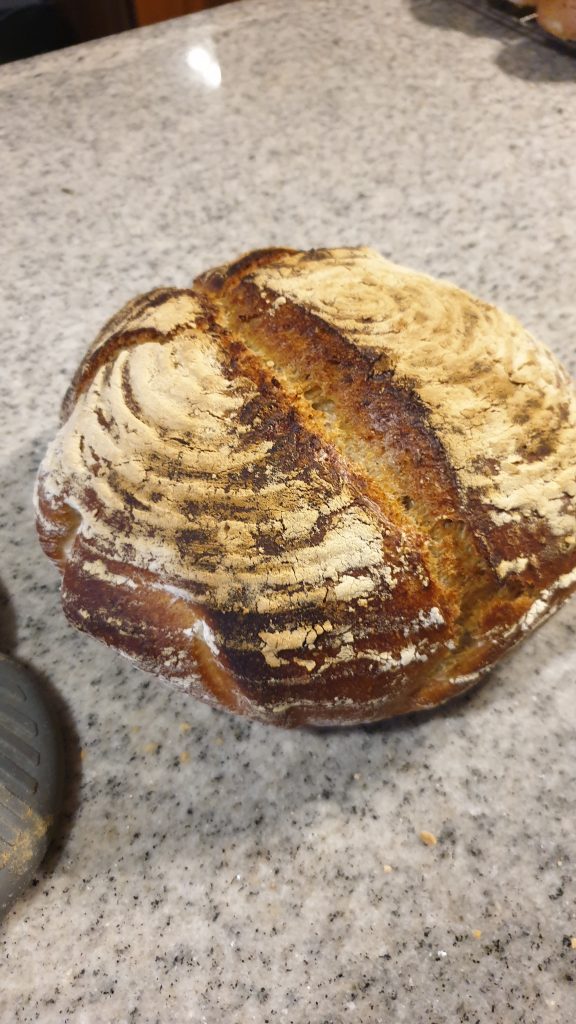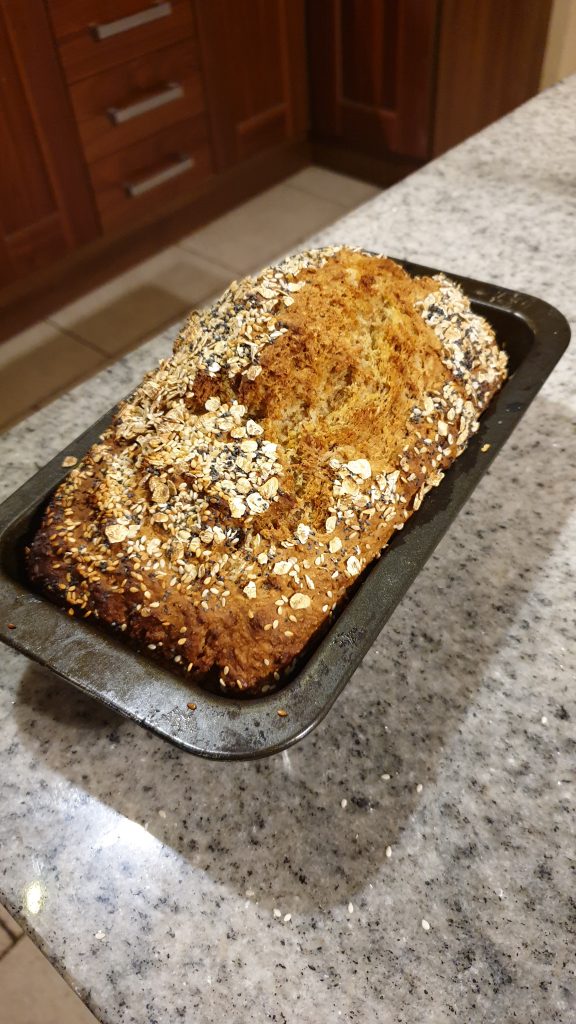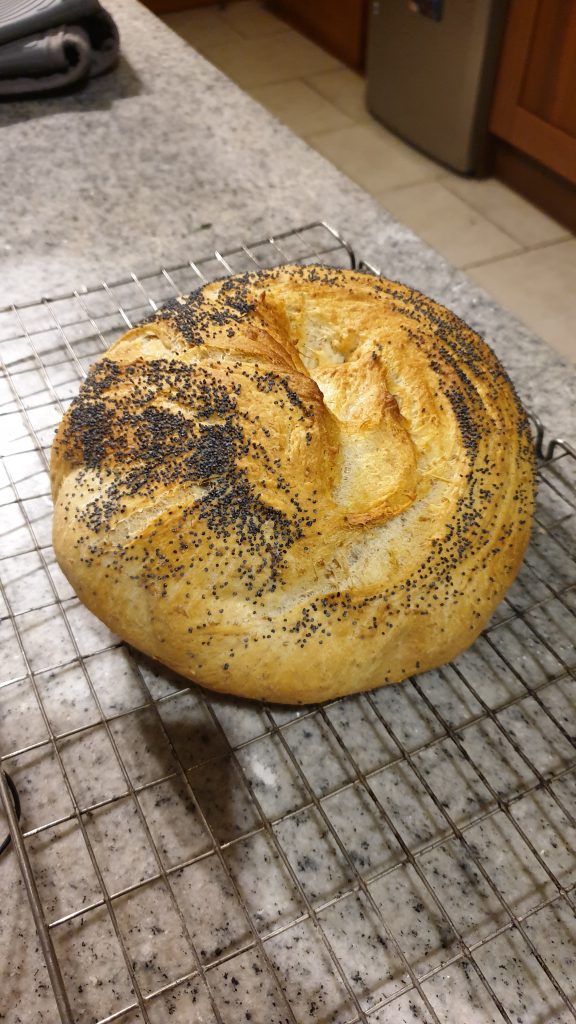
I was busy at the weekend-baking.
In this post I will review what I baked, what worked, what didn’t work.
Firstly, though, where do I get the recipes? I have been baking for about 12-18 months now, I believe, and am beginning to become more ambitious and broaden my horizons with different recipes.
I received a beautiful book at Christmas 2019, “Living Bread” by Daniel Leader and am beginning to dip my toe into Leader’s recipes and method of baking, including the Autolyse technique.
Autolyse is simply where you mix the flour and water first and let it rest and work its magic for 20/30 minutes before adding the levain/sourdough starter.
Anyway, this weekend I made “Field Blend #1”. This bread is made up of strong white flour with a small percentage of white rye flour and whole wheat flour, combined with a sourdough starter and a small quantity of instant dried yeast.
It involved a fermentation time of 5 hours and I proved it overnight in the fridge from 9 pm to 5 am the next morning.
Crucially, the hydration rate is high with 295 g of water giving a rate of approximately 74%. My bread turned out well, had a good rise and structure, had a soft crumb and is tasty.

I also made an “Overnight Country Blonde”. This has a hydration rate of 78% which is quite high for a beginner or novice baker to handle. It was showing great promise when I put it into the banneton basket to prove overnight in the fridge.
Unfortunately, when I went to remove it the next morning to bake it was stuck to the basket because I had not put enough flour in the banneton prior to placing the dough in it. Thus, I had great difficulty getting it out of the basket and into the oven.
It looks good, if you overlook the deformity on the top of the loaf, and I look forward to tasting it. It’s just a pity it stuck in the basket and I must be conscious of this the next time I do this particular recipe.
Unlike the Field Blend #1 this recipe does not contain any instant dried yeast, it is entirely dependent on the sourdough starter for the rise.
Here is a picture.

I also made “Pain de campagne utopiste” and it appears to be a failure inasmuch it did not rise well before being placed, or in the oven. It is pretty hard too so I will have to review this one for the future. I may have been premature in using the sourdough starter for I may not have given it sufficient time to become active and bubbly.
This one was baked on a baking stone in the open fan oven and seems to be dry and hard, which can happen with the fan oven, notwithstanding the insertion of water/steam into the oven by placing water in a baking dish in the base of the oven when baking.
I also made my Irish soda bread/brown bread. It was its reliable self and Neven Maguire’s recipe for this bread has never let me down; it produces consistently good results and a top quality brown bread.

I baked a white loaf, too, which contains sunflower seeds and is topped with poppy seeds. This is a simple white loaf which only takes about 1.5 hours start to finish and you can bake it in a regular rectangular baking tin in the open oven.
Or you can bake it in a “dutch oven” type container like a Le Creuset or Pyrex dish. The important thing is that the dish or pot contains the dough and the moisture within the container for the first 30 minutes or thereabouts. It is this retention of moisture in the dough which gives it a tremendous lift and puffiness.
Then you bake it with the lid off for 20 minutes or so which caramelizes the crust.

The most important ingredient
One of the most important ingredients, if not the most important, in baking is time. The more time, the less rush and haste, the better.
You will almost certainly find the same principle applies to your career and business.